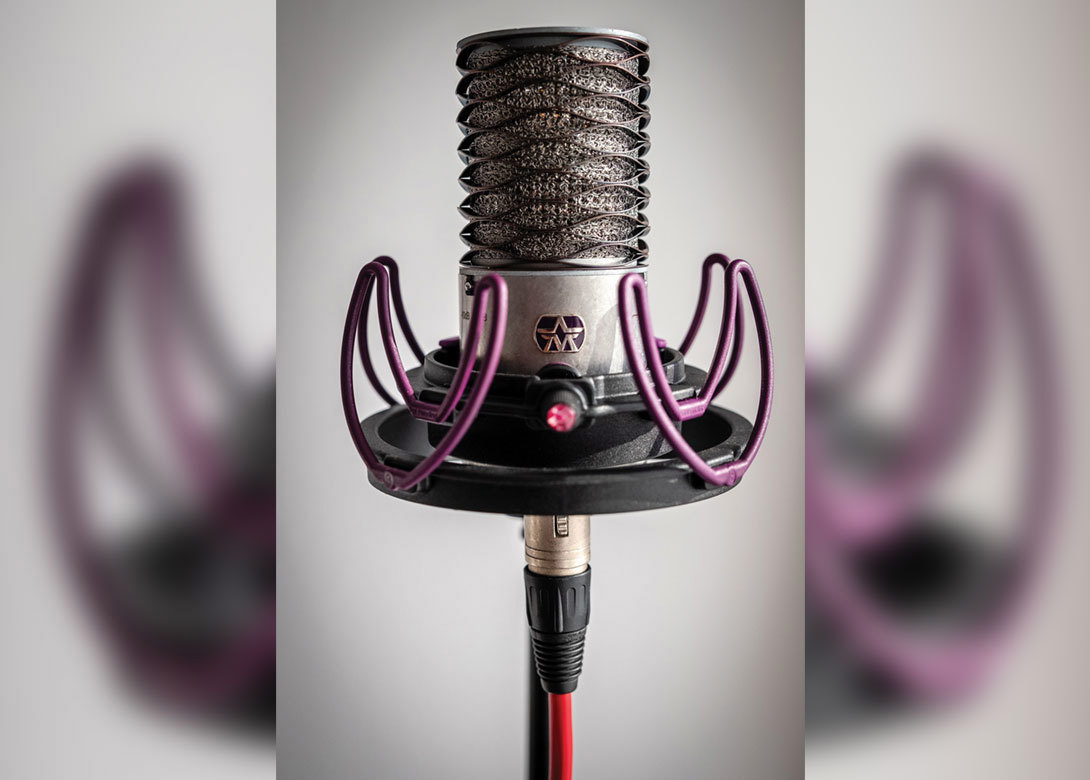
It may come as a surprise to hear that top music artists have performed on stage and in the studio with wave springs. When examining potential uses for wave springs, aerospace, automotive and medical applications are usually the first that come to mind – not live music. Here Justin Lawrence, applications engineer at fastening and fixing supplier TFC Ltd, explores the more unusual applications for wave springs.
UK manufacturer Aston Microphones used a Crest-to-Crest® wave spring to combine practicality and aesthetics when designing its first microphone. When looking to design a radical new product, Aston’s designers were first impressed with the visual appearance of the spring. Another attraction was the unique manufacturing method, which enables the production of bespoke springs to the designer’s exact specifications.
At the suggestion of TFC, the final design included squared shim ends so the spring offered a full 360º supporting shoulder within the product. Once assembled, the spring provided an attractive and robust outer shell to protect the fragile electronics. Should the microphone be dropped and the spring distorted, the flat wire form allows the head to be straightened by hand in seconds. All this was achieved without any distortion to the sound quality of the vocal input.
Lock washer replacement
Lock washers can prevent nuts and bolts from slipping or turning in an application. The washer applies a load to minimise the effects of vibration, keeping the nut and bolt secure. Lock washers are typically manufactured from low cost materials. When special alloys are needed for corrosive, or extreme temperature environments, custom lock washers can be impossible to source unless ordering vast quantities. That is why for highly specialised subsea or space applications, nested wave springs can be considered as an alternative. However, it should be noted that compressing these springs to solid will induce some loss of load so talking to a specialist from the outset is key.
Nested wave springs also offer functional benefits when compared with lock washers. These springs are coiled in series, increasing the load with each turn until the desired spring rate and deflection are reached. For larger diameter bolts, these springs can provide a more evenly distributed force, keeping the stresses uniform around the bolt head. Nested wave springs can therefore provide a more accurate, repeatable load than a standard lock washer.
Athletic shoes
The performance of athletic or casual shoes is partly determined by the amount of shock absorption they provide. Typically, wave springs are used in mechanical engineering, so it is easy to see why they could be considered as a shock absorber for the human body. Most manufactured products and assemblies will have space limitations, and the sole of a shoe is no exception.
Crest-to-Crest springs provide space saving capabilities in a very lightweight design. They are also roughly half the height of coil springs, but still provide similar capacity to absorb the heavy, repeatable loads created by a jog around the neighbourhood. This practical use in a shoe is an example of how wave springs are apt for both static (standing) and dynamic (running) purposes.
While wave springs are typically thought of in the context of automotive, aerospace or medical applications, their possibilities are endless. These applications show how wave spring technology is being applied across different industries, from casual consumer products to space exploration and everything in between.
Factors such as available space and operational performance all play significant roles in the design process and TFC engineers have a wealth of experience to help maximise the benefits of using this technology.

Biog
Having spent a decade in the fastener industry experiencing every facet – from steel mills, fastener manufacturers, wholesalers, distributors, as well as machinery builders and plating + coating companies, Claire has developed an in-depth knowledge of all things fasteners.
Alongside visiting numerous companies, exhibitions and conferences around the world, Claire has also interviewed high profile figures – focusing on key topics impacting the sector and making sure readers stay up to date with the latest developments within the industry.






